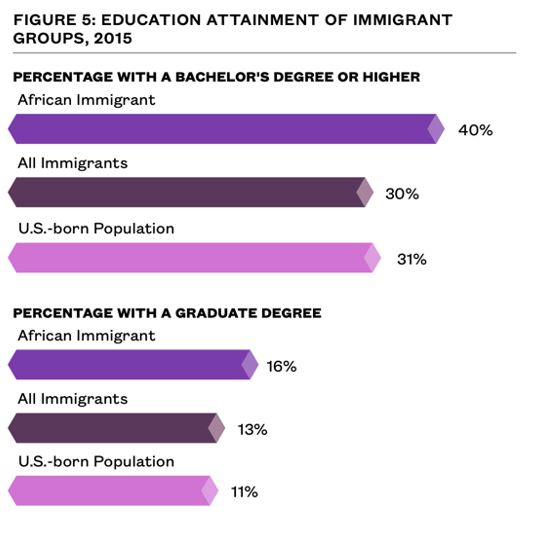This instructional plan is based on the Mathematics Teacher: Learning and Teaching PK-12 article " Supporting Black Students' Mathematical Identity" by Taajah Witherspoon. In this lesson, students will explore the historical and contemporary contributions of the continent of Africa, which includes its resources and people. Through engaging activities and discussions, students will develop a strengthened mathematical belonging by connecting with the rich heritage of Africa, fostering a sense of pride and recognition in their own black identity.
.jpg) Connections Task Notes
Connections Task Notes
Day 1: Interactive Teacher-Led Presentation
Introduction:
Welcome students and inform them that these sessions will explore global contributions and math achievement.
- Explain the importance of understanding global contributions as they enable us to make meaningful connections between our personal experiences and cultural heritage.
- Open the PowerPoint presentation and project slide #1a. Direct students to review the images on slide #1a.
- Ask students to first think independently and then with a partner about where they think the images were taken.
- After two or three students share their responses, transition to the next slide, #1. Provide students with the Connections Task Notes sheet. Invite them to write and share everything they know about the unnamed image on the screen. Inform students that the notes sheet can be used throughout this presentation.
Slide 2: Importance of Knowing History
- Read the passage on the importance of knowing history.
- Emphasize Africa's role in the origin of humanity, ancient civilizations, and contributions to mathematics and science.
Slides 3 & 4: Wealthiest People and TED-Ed Video
- Ask students about the richest people who ever lived.
- Introduce the TED-Ed video, "Who are some of the wealthiest people who ever lived?"
- After the video, discuss Africa's contributions to wealth and learning.
Slide 5: Natural Resources in Africa
- Discuss natural resources extracted from Africa for technology.
Slides 6 - 8: Cities and Countries in Africa
- Display images on the slides showcasing cities (Lagos, Nairobi, Cairo) while also placing emphasis on the respective countries (Nigeria, Kenya, and Egypt).
- Solicit student thoughts about the images.
Slide 9: Analyzing the Achievement Gap Graph
- Introduce the graph on math and literacy achievement.
- Ask students to share what they notice and then encourage them to discuss possible causes.
- Inform students that this gap is happening for two primary reasons: 1.) “…there are deeply ingrained biases communicating blackness equals inferiority and 2.) poor teaching” (Delpit, 2012)
Slide 10: Causes of the Achievement Gap
- Discuss cognitive and motor skills in African babies versus European babies.
Slide 11: Educational Attainment of African Immigrants
- Share statistics on African immigrants' educational attainment.
- Emphasize the higher percentage of bachelor's degree attainment.
- Connect this information with the information from the previous slide regarding African babies' cognitive and motor skills.
Student Reflection
- Ask students to write at least two insights and one wondering from the presentation.
Closing Discussion
Discuss student insights and wonderings. If you observe an intriguing trend during the whole group discussion on slide #1a in which students are sharing their guesses about the locations of the images, inquire why they think certain images match specific places. Subsequently, inform them that all images were captured in Africa. This revelation aims to prompt students' reflections on assumptions and challenge preconceived notions, fostering a broader understanding of the diverse landscapes within Africa. Emphasize the importance of recognizing and celebrating diverse contributions and achievements.
.jpg) Connections Task Menu
Connections Task Menu
Day 2:
Introduction:
Recap the previous day's presentation and its main points. Provide students with a digital copy of the Connections Task Menu and then inform them that they can work in any order to complete the tasks and complete them accordingly. Except for the two links noted as “Optional,” all tasks are required. Emphasize the importance of independent exploration.
Student-Led Exploration:
Provide access to digital resources via the Connections Task Menu. Instruct students to explore various aspects of African contributions and encourage them to collaborate, share findings, and ask questions. Circulate the room, monitor, and facilitate as needed.
Group Discussion:
Ask students to share their discoveries and insights with the class. Encourage critical thinking and reflections on the materials explored and discuss how understanding Africa's contributions can lead to a more just society. Discuss how this information can impact the teaching and learning of mathematics and the potential actions that can address educational disparities.
Summarization and Reflection:
Use the whiteboard to summarize key takeaways from the student-led exploration and invite students to share personal reflections on their learning.
Learning Objectives
By the end of this instructional plan, students will have a deeper understanding of Africa's contributions and the opportunity gaps in education. This module can enhance African American students' self-identity, more specifically with mathematics.
Students will-
- Promote an understanding of cultural diversity.
- Use digital resources and technology tools.
- Foster critical thinking skills by analyzing data (maps and graphs)